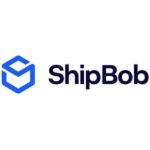What is procurement? Well, it’s a broad term that refers to a variety of operations associated with acquiring products or services.
Procurement managers work hard to find low-cost goods that will ultimately provide the best value. Organizations consider procurement to include all phases of the project, from collecting essential goods and locating suppliers to monitoring deliveries and adjusting finances. It’s an important part of every company’s operations. It can drastically boost your company’s financial performance when properly administered.
Known as the best-in-class fulfillment service, ShipBob can help you streamline your business with warehousing solutions, robust integration software, improved transit times, and reduced shipping costs!
How Does Procurement Work?
Procurement will always be a fundamental and crucial component of business operations. It can have a significant impact on a company’s net profit because it helps organizations receive the products it needs in a dependable and affordable manner.
The procurement process covers a wide range of tasks related to procuring products, such as researching, signing contracts, transferring funds, reporting when supplies arrive, and keeping records.
What Does Procurement Mean in Business?
Many business owners will find themselves asking, “What is the role of procurement?” It can positively impact organizations of all shapes and sizes, but not everyone understands what procurement means for businesses.
Procurement is essentially an integral aspect of all businesses because it assists companies with the process of locating trustworthy suppliers who can offer reasonably priced products that meet the company’s requirements. It’s critical to keep an eye on the acquisition process and evaluate it on a regular basis to identify any flaws or bottlenecks.
What are the Four Types?
Direct procurement is the process of acquiring everything needed to create a finished product. This includes raw materials and parts for a production process. This type of procurement encompasses any and all goods bought from a distributor for resale.
Indirect procurement involves investments that are necessary for daily operations. However, it doesn’t involve investments that immediately benefit a firm’s profitability.
Goods procurement usually relates to the purchase of tangible products, but it can also pertain to the purchase of software subscriptions. Proper inventory management procedures are often required for effective commodities acquisition. Both direct and indirect purchase may be included.
Services procurement includes all people-based services acquired, either for direct or indirect procurement objectives.
What is the Goal of Procurement?
It’s important to keep in mind that procurement is a continuous process, not a series of discrete actions. Businesses, for example, strive to create connections with key suppliers in order to acquire superior quality and lowest costs available, which translates to larger profit margins.
Strategic procurement needs to be enacted as a company-wide procedure that strives to ensure the timely delivery of goods and services. Ultimately, procurement must unfold in accordance with the company’s business objectives while decreasing supply chain risk.
How Many Stages Are There?
There are several steps involved in the procurement process. A corporation determines the commodities or the services that it requires by seeking out suppliers who can assist in the achievement of business goals. From there, the company will purchase the products and await their arrival.
Here are the four stages of the procurement process:
- Identifying a necessity
- Assessing and selecting suppliers
- Placing orders
- Awaiting deliveries
What Is Procure-to-Pay?
The phrase procure-to-pay (P2P) is used in the software business when referring to a particular section of the procurement process. P2P solutions allow the financing team and the accounts payable division to work together.
Example
Procurement refers to the process of locating and acquiring goods from a third-party service provider. A good procurement plan can accomplish a lot. For example, it can save a lot of money for companies because it involves the process of negotiating favorable terms and prices. It can also guarantee the quality, accuracy, and availability of suppliers.
Why is Effective Procurement Important?
An efficient procurement strategy encompasses all aspects of the procurement process, which is why it’s so crucial to all business organizations.
Reduce Cost and Increase Margins
Within a purchasing department, procurement efficiencies can be made in a variety of sectors. Procurement cost savings are intended to reduce procurement expenses, enhance vendor terms, and lower product pricing.
Brand Reputation
Sustainable procurement practices can help you improve your company’s reputation. Organizations employ a variety of procurement strategies to promote their products and raise brand awareness.
Identify Reliable Long-Term Suppliers
It’s critical for any organization to locate and work with the right suppliers for their business needs. The process of identifying, evaluating, and contracting suppliers is known as supplier selection. With a procurement process, you can reduce purchasing risks, increase total value to buyers, and establish long-term relationships.
Advantages
- Cost-Cutting: A well-known advantage of procurement planning is the incredible savings that can result from carefully selecting and purchasing products.
- Additional Resourcing: Procurement planning entails taking all aspects of a department’s requirements into account in order for all processes to function efficiently. Some initiatives might necessitate the incorporation of additional resources that will require more preparation overall.
- Long-Term Strategy Planning: When it comes to building and improving an efficient business strategy that can be adjusted across multiple projects or applied to future plans, procurement can be extremely valuable.
Disadvantages
Increased Complexity: Procurement solutions frequently increase complexities and costs, mainly as a result of a lack of understanding of customer requirements.
Increased Risk: The most frequent types of procurement disadvantages and risks include market risks, potential scams, costs, efficiency, and delivery hazards.
Procurement vs Purchasing
When a corporation needs to obtain goods or services, both procurement and purchasing will be involved in the process. However, these two functions have distinctly different goals, and the methods of achieving them differ vastly as well.
Many new business owners don’t understand the difference between procurement and purchasing. Purchasing is a department that manages the company’s budget and purchases products or services. Procurement is the process of identifying organizational requirements and helping to ensure that those needs are met.
Procurement Can Improve Your Business
The act of purchasing products or services, usually for business objectives, is known as procurement. It can have a significant impact on a company’s profitability and ongoing efficiency.
Sign up for a FreightWaves e-newsletter to stay informed of all news and trends impacting supply chain careers and operations.



